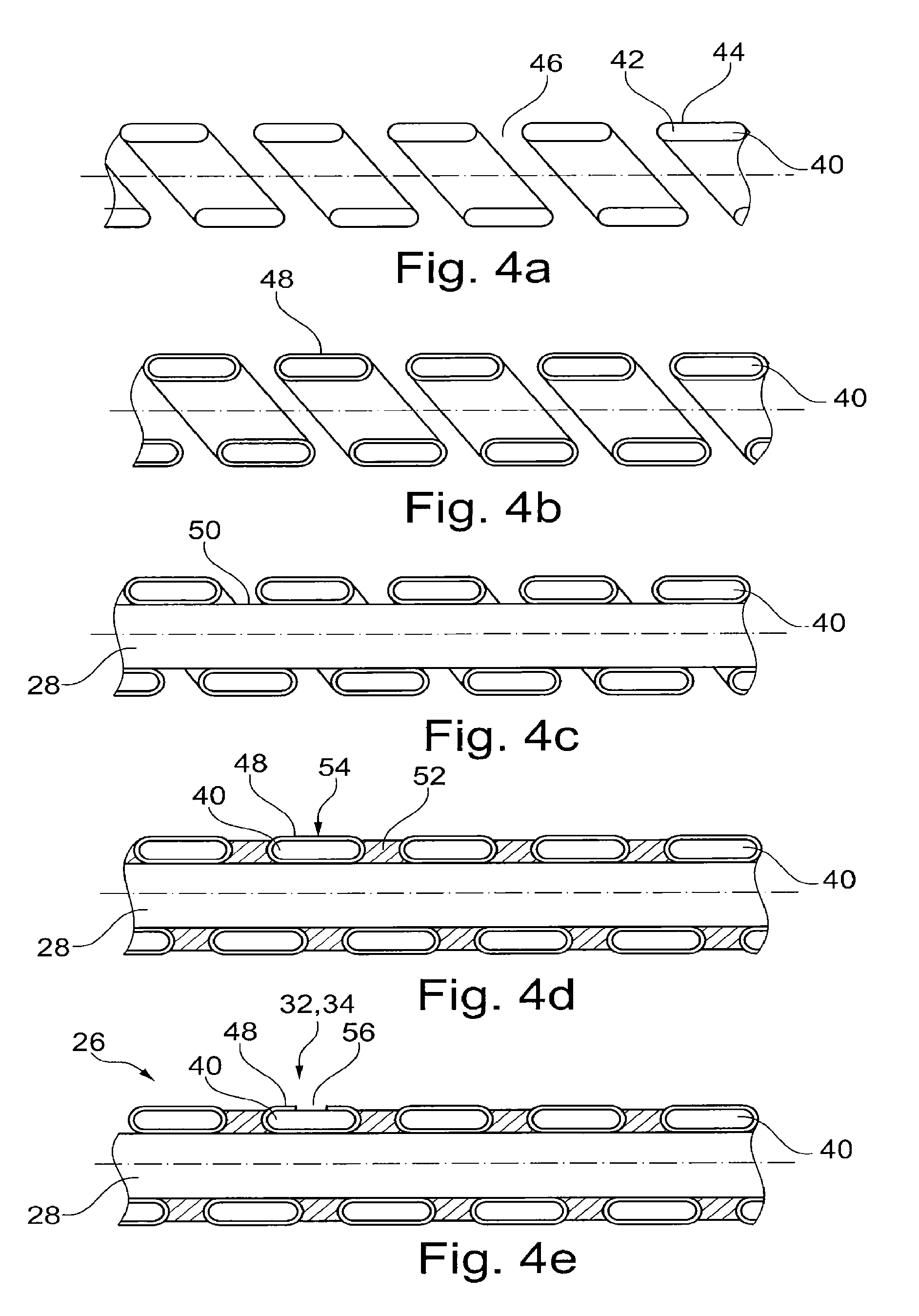Pacing lead in an extended area of a heart cavity, implantable by over the wire technique in the deep coronary network
a deep coronary network and extended area technology, applied in the field of active implantable medical devices, can solve the problems of large diameter, difficult to concurrently implant two leads in the coronary venous system, and limitations described above on the fineness of leads, so as to facilitate the transmission of forces, reduce the thickness of the electrically insulating exterior layer and reduce the diameter of the hollow tubular extension
- Summary
- Abstract
- Description
- Claims
- Application Information
AI Technical Summary
Benefits of technology
Problems solved by technology
Method used
Image
Examples
Embodiment Construction
[0056]With reference to the drawings FIGS. 1-7, preferred embodiments of a lead in accordance with the present invention will now be described.
[0057]FIG. 1 generally illustrates a patient's myocardium and major vessels of the coronary network, in which a lead 20 was introduced to stimulate the left ventricle. Lead 20 is implanted in the intracardiac coronary venous system via the superior vena cava, right atrium and the input of the coronary sinus vein CS. The coronary venous system then develops into several branches from the great cardiac vein GVC, these veins branches including the posterolateral vein VPL, the lateral vein VL, the anterolateral vein VA and the posterior vein VP.
[0058]FIG. 2 illustrates in cross section and schematically, in the region of the stimulation electrode, the structure of a conventional prior art pacing lead for implantation in the coronary venous system. This conventional construction comprises an electrically insulating lead body 10, with a central lum...
PUM
| Property | Measurement | Unit |
|---|---|---|
| diameter | aaaaa | aaaaa |
| diameter | aaaaa | aaaaa |
| surface area | aaaaa | aaaaa |
Abstract
Description
Claims
Application Information
 Login to View More
Login to View More - R&D
- Intellectual Property
- Life Sciences
- Materials
- Tech Scout
- Unparalleled Data Quality
- Higher Quality Content
- 60% Fewer Hallucinations
Browse by: Latest US Patents, China's latest patents, Technical Efficacy Thesaurus, Application Domain, Technology Topic, Popular Technical Reports.
© 2025 PatSnap. All rights reserved.Legal|Privacy policy|Modern Slavery Act Transparency Statement|Sitemap|About US| Contact US: help@patsnap.com



